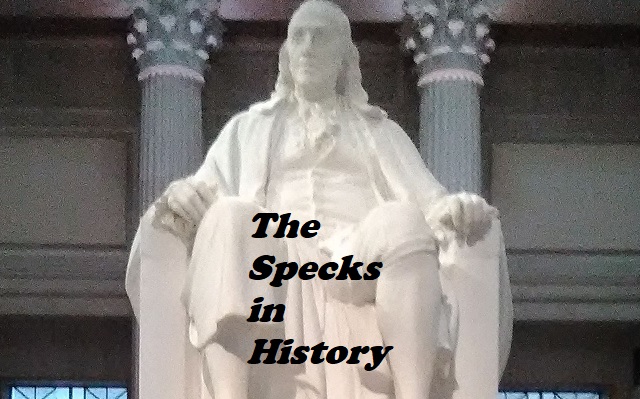The Specks in History


“Judge not, that you be not judged. For with what judgment you judge, you will be judged; and with the measure you use, it will be measured back to you. And why do you look at the speck in your brother’s eye, but do not consider the plank in your own eye? Or how can you say to your brother, ‘Let me remove the speck from your eye’; and look, a plank is in your own eye? Hypocrite! First remove the plank from your own eye, and then you will see clearly to remove the speck from your brother’s eye.” – Matthew 7:1-5
A couple of years ago, my husband and I took our children on a field trip to see the Liberty Bell in Philadelphia. When we exited the building, there was a television monitor outside loudly playing a video disparaging one of the founding fathers. We hurried the children away from it because it just felt wrong to me.
With the recent stories in the news about statues being torn down by angry mobs, I’ve given this some more thought. As a homeschooling parent, it begs the question, “What is the right approach in teaching my children about historical figures?”
I suspect that the reason there is so much vitriol towards some of these people is that the tendency in the past has been to venerate them and hold them up as examples to our children. I can understand why that would have happened. How better to inspire children to use their God-given gifts to the utmost and not settle for mediocrity than to give them an accomplished person to emulate? The pushback to that in recent generations seems to be to point out their every moral failing as if to make them pay penance for their fame.
As a Christian, I believe my job is to teach my children to idolize and imitate only one human being – Jesus Christ. Anyone else, successful or not, is only another sinner like them. Even public figures that are generally admired by most of us still have hidden sins, as do we. No one has attained perfection.
I want to teach my children both by my words and by my example to emulate Jesus. To be an example, I have to follow His commands. That includes not attempting to remove the speck from someone else’s eye when I have a plank sticking out of my own eye (Matt. 7:1-5). It also means that I should not cast the first stone when I am not without sin myself; that I should treat others the way that I want to be treated (John 8:7; Matt.7:12).
I think it is a good idea to provide balance in our history lessons by presenting both what someone may have done that was right versus mistakes that they made. There has to be a line, though, where I determine what information is useful for them to have and what is just tabloid fodder. One thing I find helpful is to take off my 21st-century lens for a moment and look through the lens of the time period we are studying. Every generation has their predominant sins. There are things that were accepted in the past that appall us, but if the people living in that time were able to look forward to practices that are accepted today, they would find plenty to be appalled with as well.
After I have removed and carefully examined the whole board that was in my eye, it makes me humble and less likely to harshly point out the mere splinter in another’s eye. If the person is deceased what is accomplished by pointing out their failings at all? What it comes down to for me is this: I would not want my sins blaring from a TV into the streets of Philadelphia, so I will not do that to someone else.
Heather Eberlin is a married mother of four children, ranging in age from six to twenty-five. She is currently homeschooling her two youngest children and has felt called to share her journey in order to encourage others. She is an amateur gardener who is amazed at the things that God’s creation reveals when you take the time to pay attention to it. You can follow her at Musings from My Garden.














































